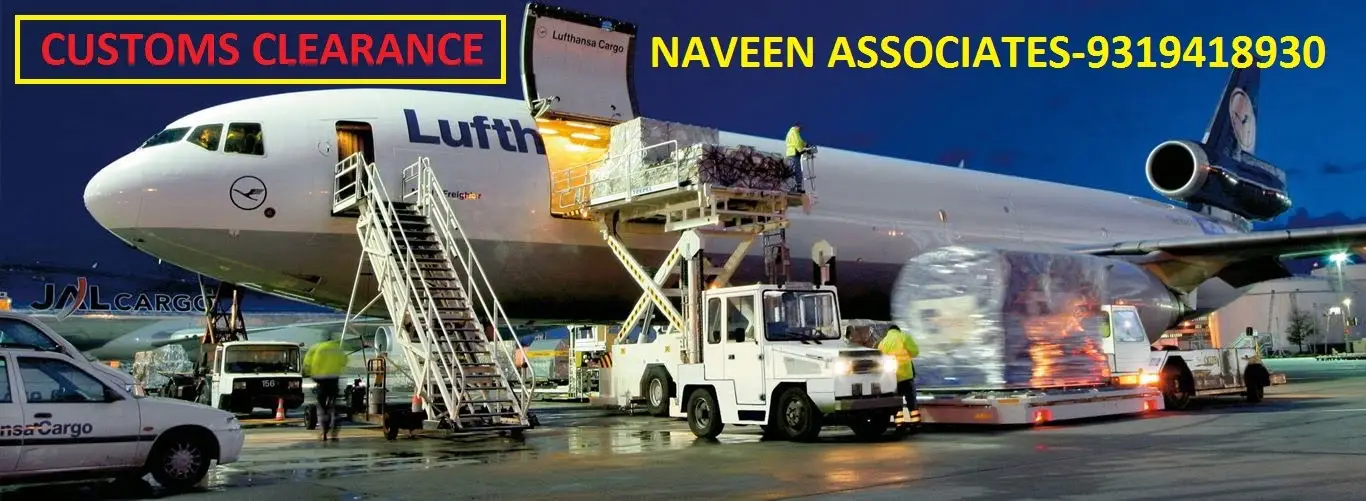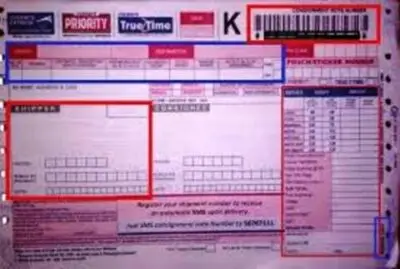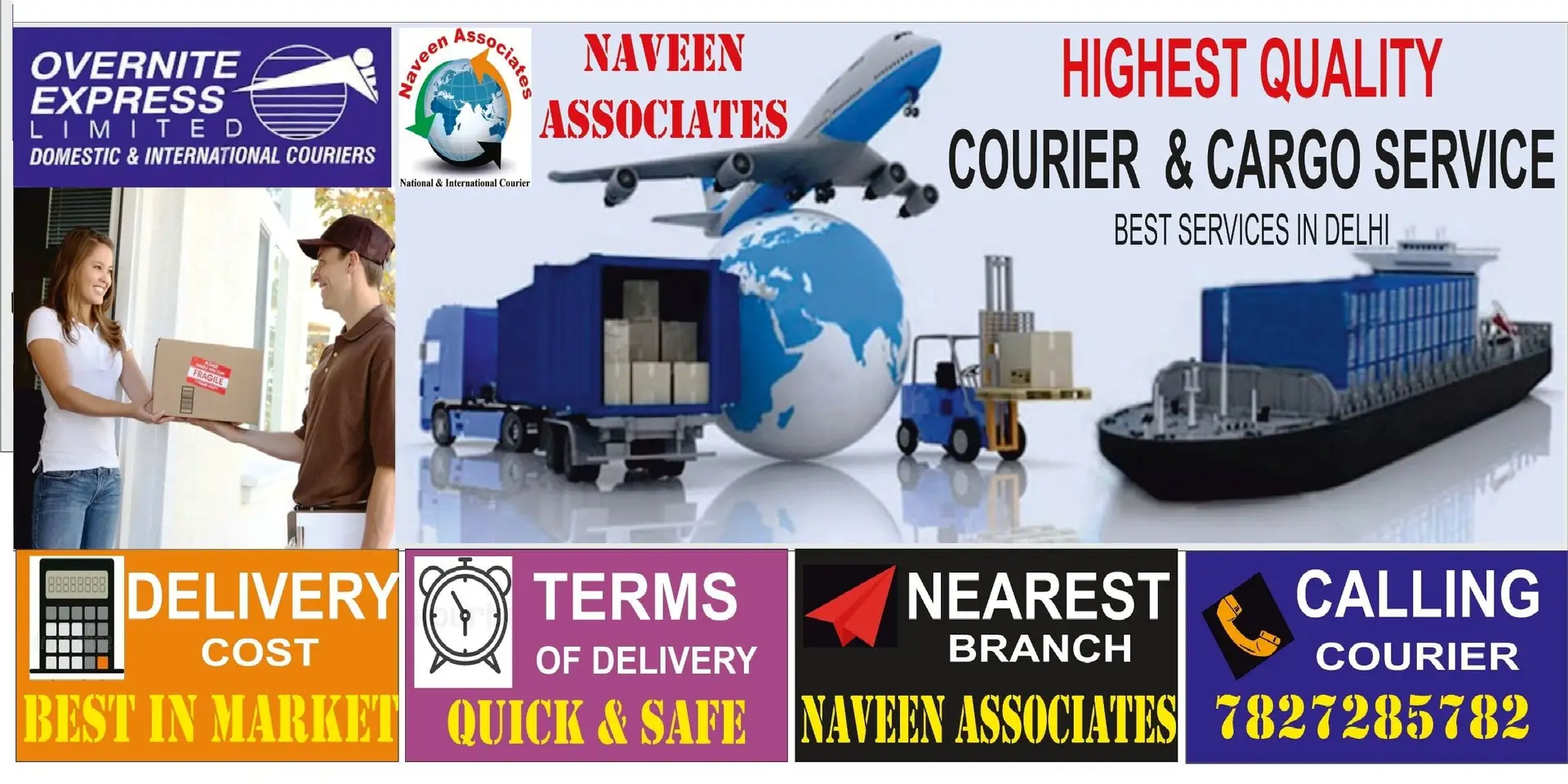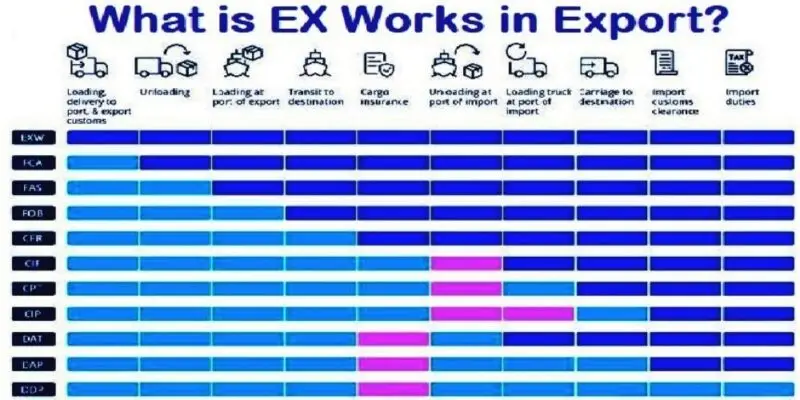Before ordering anything, we must know the documents required to be submitted for Customs clearance. Simply put, we can say that “Documents Required For Customs Clearance”.
Now the world has shrunk to just a click or phone call away and we can easily start importing articles, goods, machinery, and much more from other countries without the knowledge of Customs Clearance in India. In my view, we should study in detail for the documents required for Customs Clearance.

For any goods being imported from another country, we need to submit some mandatory documents to the customs officials and in this blog, I have mentioned all the documents required for Customs Clearance in India.
First of all, let me clarify: Documents required for customs clearance under all products are not the same. However, we can discuss the mandatory documents required for customs clearance for importing countries.
We shall discuss with some general information on Import and Export documents required for customs clearance from which you can have a common idea on the subject. I hope this information will help you a lot to know about the mandatory documents required for import and export.
Since various types of commodities are imported from different countries, a complete list of documents required for customs clearance procedures cannot be provided. Moreover, different countries have their policies to turn different procedures and formalities for import clearance.
Each product under import and export is classified under a code number accepted globally which is called the Indian Trade Clarification (ITC) number.
Different countries have bilateral import-export relations in terms of agreements between their Governments and our Government. Imports and exports from those countries may or may not have exemptions on documentation and filing for export and import clearance.
Customs duty is also levied on these bilateral trade agreements and relationships. For example, customs duty on personal use items purchased in NIL for Nepal, Bhutan, and Myanmar, but duty is chargeable for other countries.
There are certain legal and specific documents required to be submitted to the Customs Department for customs clearance and certain procedures are mentioned for certain articles as well as goods. To start with detailed knowledge of customs clearance in India, the following are common documents required to clear your goods from the Customs Deptt.
To send or receive your shipments, the following Import Export documentation is required:-
Table of Contents:-
1. Bill of Entry
2. Commercial Invoice.
3 Packing List
4. Bill of Lading or Airway Bill or Eway Bill
5. Import License
6. Insurance Certificate
7. Technical Literature or Write-up for Specific Goods
8. Purchase Order or Letter of Credit
9. Industrial License
10. Registration cum Membership Certificate (RCMC)
11. Test Report/ Inspection Certificate or Certificate of Origin
12. General Agreement on Tariff and Trade (GATT) Declaration
What is the import procedure in India?
In the last decade, India has progressively replaced licensing and discretionary controls over imports with deregulating and easier import procedures. Most heavy things fall at intervals within the scope of India’s EXIM Policy regulation of Open General License (OGL).
This means that they’re deemed to be freely importable while not restricted and while not a license, except to the extent that they’re regulated by the provisions of the Policy or any other law.
Import licensing requirements
Imports of goods (Not covered in Open General License) are regulated by three categories divisions i.e. Illegal or prohibited items, Restricted things requiring import license, and the third by “canalized” items importable only by the government.
The following area unit selected import certificate issuance authorities (ICIA):
The Department of Electronics covers imports related to computer and Information Technologies-related items and the Department of Industrial Policy and Promotion for organized sector firms except for the import of computers and Information Technologies-related items.
Defense-related items are procured by the Ministry of Defense. The Director-General of Foreign Trade for small-scale industries for their related items.
Capital merchandise will be foreign with a license below the Export Promotion Capital merchandise set up (EPCG) at reduced rates of duty, subject to the fulfillment of a time-bound export obligation.
The EPGC setup currently applies to all or any trade sectors. It is conjointly applicable to all or any capital merchandise with no threshold limits, on payment of a 5 p.c. custom duty charges.
For the particular user, a non-transferable advance license is one such license. For those who don’t want to travel through the advance-licensing route, a post-export duty-free replenishment certificate is available.
Advance Authorization
An advanced license is issued to permit the duty-free import of inputs, which are physically incorporated in the export product (making normal allowance for wastage). Also, fuel, oil, energy, catalysts, etc. that area unit consumed throughout their use to get the export product, may be allowed under the plan.
The raw materials/inputs area unit allowed in terms of normal Input-Output Norms (SION) or self-declared norms of the bourgeois.
Physical exports
An advance license could also be issued for physical exports to a manufacturer bourgeois or businessperson bourgeois tied to supporting manufacturer(s) for the import of inputs needed for the export product.
Intermediate supplies
An advance license could also be issued for an intermediate provider to a manufacturer- bourgeois for the import of inputs needed within the manufacture of products to be provided to the last word exporter/deemed exporter holding another Advance License.
Deemed exports
An advance license may be issued for deemed exports for the import of inputs needed within the manufacture of products. Such provisions are mentioned in the FTP Policy from April 2015 – March 2020. An advanced license for deemed exports may be availed by the sub-contractor to such a project provided the name of the sub-contractor(s) seems within the main contract.
Such a license for deemed export may be issued for provides created to international organization Organizations.
What are the imported products in India?
We are importing 7500 types of goods all around the world and our export it is increasing YoY basis. India imported US$507.6 billion worth of goods from around the globe in 2018-19, which is up by 10.5% since 2014-15 and up by 14.3% from the financial year 2017 to 2018.
From a continental perspective, 60.3% of India’s total imports by the worth in 2018 were purchased from Asian countries.
European trade partners equipped 15.8% of essentials purchased by the Asian nation. 8.2% worth originated from Africa with another 8.1% coming from exporters in North America.
Smaller percentages arrived in Asian nations from the geographic region (4.2%) excluding North American countries however together with the Caribbean, and Oceania (2.9%) led by Australia.
Given India’s population of 1.297 billion people, its total $507.6 billion spent on 2018 imports translates to roughly $400 in yearly product demand from every person living in the vast South Asian country.
The following product teams represent the best dollar worth in India’s import purchases throughout 2018. Also shown is that the share of every product class represents in terms of overall imports into the Asian nations.
1. Mineral Fuels including Crude oil: US$168.6 billion which is 33.2% of the total imports of India.
India imports thirty-fifths of its crude oil needs from foreign. Petroleum comes from Persia, Kuwait, Asian countries, and the Kingdom of Saudi Arabia. In 2004-05, petroleum worth Rs. 134095 crore was imported.
2. Gems, precious metals: $65 billion (12.8%)
Precious stones are Germs, Ruby Sapphire, etc. These area units are foreign from the European nations and America and when finishing, these are exported. In 2004-05, stones worth Rs. 42385 crore were imported.
3. Electrical machinery, equipment: $52.4 billion (10.3%)
4. Machinery including computers: $43.2 billion (8.5%)
To meet the requirement of manufacture, the Asian nation imports machines on an oversized scale. We import machinery and computer-related goods from America, England, Germany, Japan, and Russia. In 2004-05 machines worth Rs. 37335 crore were imported.
5. Organic chemicals: $22.6 billion (4.4%)
6. Plastics, plastic articles: $15.2 billion (3%)
Plastic is foreign from the USA, Britain, and Japan Plastic valued at Rs. 6290 crore was imported in 2004-05.
7. Iron, steel: $12 billion (2.4%)
India continues to be dependent on the production of iron and steel. It imports steel every year. It is foreign from the USA, UK, European nations and France. In 2004-05, steel was imported worth Rs. 11675 crore.
8. Animal/vegetable fats, oils, waxes: $10.2 billion (2%)
9. Optical, technical, and medical apparatus: $9.5 billion (1.9%)
10. Inorganic chemicals: $7.3 billion (1.4%)
Chemical fertilizers:
To increase the productivity of the land fertilizer area unit used. India imports a great number of chemical fertilizers from the U.S.A., Russia, and the E.U. In 2004-05. Chemical fertilizers worth Rs. 5140 crore were imported.
India’s prime ten imports accounted for four-fifths (80%) of the general worth of its product purchases from alternative countries.
Imported mineral fuels together with oil had the fastest-growing increase in worth among India’s prime ten import classes, up to thirty-seventh percent on a year-on-year basis.
In second place for increasing import purchases was the inorganic chemicals class via a twenty-nine. 8% improvement, trailed by the 25.6% increase for organic chemicals and the 20.1% gain for machinery including computers.
The two declining categories for India’s imports were animal and vegetable fats, oils, and waxes (down -14.4%) and gems and precious metals (down 12.6%).
Note that the results listed above are at the categorized two-digit Harmonized Tariff System. For an additional careful read of foreign merchandise at the four-digit HTS code level, see the section Searchable List of India’s Most Valuable Import Products further down near the bottom of this text or underneath the adjacent product folder tabs.
What is the IEC code?
IEC code stands for Import Export Code. It is a ten-digit license code needed by firms or Companies or people to start associated with Import-Export Business in India. It is also necessary for availing benefits under schemes like MEIS and SEIS.
Applicants may apply on the website of The Director-General of Foreign Trade (DGFT), Department of Commerce, Government of India to grant this Import Export code and the department issues the certificate after a thorough analysis of their application.
How to Apply For IEC code?
There are specific laws ordered down by the Government of India that require to be followed and furnishing with proper documents. There could be a transient rehearsal of documents needed alongside the IEC application.
First, transfer the IEC form online from the Director-General of Foreign Trade website. The application form should be ANF 2A. You can also fill out the form online now.
You will need the subsequent list of documents as per the instructions:-
1. Current Bank Account Details of the firm or the Company.
2. Self-attested copy of the Permanent Account Number (PAN) card favoring the firm/company.
3. Banker’s Certificate or Banking details of your firm/company.
4. Passport-size photograph (2 copies) of the applicant duly attested by the banker of the applicant.
5. In case of physical submission, you have to submit a cover letter on the letterhead of the applicant’s firm or company to request the issue of the IEC certificate.
These documents can facilitate to justification of your identity as a person or a non-public company to urge the IEC code. Next, submit the shape associated above-listed documents with an application fee of Rs. 250 /-.
When applying online, transfer the scanned copies of all documents associated with building an electronic (online) payment for the applying fee to the Director-General of Foreign Trade.
Whereas, within the offline application, submit a demand draft of Rs. 250/-, payable to the Regional Office of DGFT. Following this, send the certificate and receipt of the demand draft along with copies of documents in person to the nearest DGFT office.
Also, attach a self-addressed envelope along with a Rs.25/- postal stamp for delivery of the IEC certificate through registered post or challan/DD of Rs.100/- for speed post. The physical application ought to reach the DGFT workplace within fifteen days of the web submission of the shape.
Searchable List of India’s Most Valuable Import Products
At the additional granular four-digit HTS code level, India’s top import products are crude oil followed by gold, diamonds, coal, petroleum gas then mobile phones.
List of top 100 of India’s most in-demand imported goods during. Shown beside each product label is its total import value then the percentage increase or decrease since 2017.
| Rank |
India’s Import Product |
2018 Value in USD |
Change |
| 1 |
Crude oil |
$114.5 billion |
+39.6% |
| 2 |
Gold (unwrought) |
$31.8 billion |
-12% |
| 3 |
Diamonds (unmounted/unset) |
$26.7 billion |
-2.2% |
| 4 |
Coal, solid fuels made from coal |
$24.6 billion |
+22.5% |
| 5 |
Petroleum gases |
$19 billion |
+45% |
| 6 |
Phone system devices including Smartphone |
$18.8 billion |
-8.9% |
| 7 |
Integrated circuits/micro assemblies |
$7.1 billion |
+239.1% |
| 8 |
Computers, optical readers |
$6.3 billion |
+13.1% |
| 9 |
Processed petroleum oils |
$5.7 billion |
+48.7% |
| 10 |
Palm oil |
$5.5 billion |
-18.8% |
| 11 |
Automobile parts/accessories |
$4.8 billion |
+10.4% |
| 12 |
Silver (unwrought) |
$3.8 billion |
+28.4% |
| 13 |
Solar power diodes/semi-conductors |
$3.6 billion |
-29.7% |
| 14 |
Iron or steel scrap |
$3.4 billion |
+38.8% |
| 15 |
Light vessels, fire boats, floating docks |
$3.2 billion |
+53.2% |
| 16 |
Fertilizer mixes |
$3.1 billion |
+78.5% |
| 17 |
Turbo-jets |
$3 billion |
+32.9% |
| 18 |
Cyclic hydrocarbons |
$2.9 billion |
+30.8% |
| 19 |
Copper ores, concentrate |
$2.7 billion |
-31% |
| 20 |
Ethylene polymers |
$2.5 billion |
-6.7% |
| 21 |
Aluminum waste, scrap |
$2.5 billion |
+34.6% |
| 22 |
Vinyl chloride polymers |
$2.3 billion |
+16% |
| 23 |
Soya-bean oil |
$2.3 billion |
-17.3% |
| 24 |
Acyclic alcohols |
$2.3 billion |
+0.01% |
| 25 |
Miscellaneous machinery |
$2.2 billion |
+38.6% |
| 26 |
Petroleum oil residues |
$2.2 billion |
-2.5% |
| 27 |
Electrical converters/power units |
$2.1 billion |
+15.6% |
| 28 |
TV receivers/monitors/projectors |
$2 billion |
+20.6% |
| 29 |
Heterocyclic’s, nucleic acids |
$2 billion |
+18.1% |
| 30 |
Polyacetal /ether/carbonates |
$1.9 billion |
+33.4% |
| 31 |
Sun/safflower/cotton-seed oil |
$1.9 billion |
+2.8% |
| 32 |
Phosphoric/Poly Phosphoric acids |
$1.9 billion |
+11.1% |
| 33 |
Air or vacuum pumps |
$1.8 billion |
+19.2% |
| 34 |
Coke, semi-coke |
$1.8 billion |
+52.6% |
| 35 |
Copper wire |
$1.8 billion |
+25.9% |
| 36 |
Coconuts, Brazil nuts, cashews |
$1.7 billion |
+16.8% |
| 37 |
Electro-medical equipment (e.g. xrays) |
$1.7 billion |
+14.4% |
| 38 |
Electric storage batteries |
$1.7 billion |
+76.3% |
| 39 |
TV receiver/transmit/digital cameras |
$1.6 billion |
+66.1% |
| 40 |
Lower-voltage switches, fuses |
$1.6 billion |
+23.5% |
| 41 |
Saturated acyclic monoacids |
$1.6 billion |
+46% |
| 42 |
Computer parts, accessories |
$1.6 billion |
+12.9% |
| 43 |
Nitrogenous fertilizers |
$1.6 billion |
+10.3% |
| 44 |
Printing machinery |
$1.5 billion |
+11.2% |
| 45 |
Unrecorded sound media |
$1.5 billion |
-19.9% |
| 46 |
Flat-rolled other alloy steel products |
$1.5 billion |
+0.7% |
| 47 |
Hot-rolled iron or non-alloy steel products |
$1.5 billion |
+7.1% |
| 48 |
Machinery parts |
$1.4 billion |
+28.1% |
| 49 |
Antibiotics |
$1.4 billion |
+31.4% |
| 50 |
Aluminum oxide/hydroxide |
$1.4 billion |
+69.6% |
| 51 |
Taps, valves, and similar appliances |
$1.4 billion |
+26.6% |
| 52 |
Packaged insecticides/fungicides/ herbicides |
$1.3 billion |
+7% |
| 53 |
Paper/paperboard waste, scrap |
$1.3 billion |
+66.5% |
| 54 |
Air conditioners |
$1.3 billion |
+26.3% |
| 55 |
Physical/chemical analysis tools |
$1.3 billion |
+8.9% |
| 56 |
TV/radio/radar device parts |
$1.3 billion |
-13.7% |
| 57 |
Propylene/olefin polymers |
$1.3 billion |
+12.9% |
| 58 |
Other measuring/testing machines |
$1.3 billion |
+25.5% |
| 59 |
Piston engine parts |
$1.2 billion |
+18.6% |
| 60 |
Ball, roller bearings |
$1.2 billion |
+28.2% |
| 61 |
Transmission shafts, gears, clutches |
$1.2 billion |
+19.8% |
| 62 |
Potassic fertilizers |
$1.2 billion |
+10.5% |
| 63 |
Polycarboxylic acids |
$1.2 billion |
+50.6% |
| 64 |
Flat-rolled iron or non-alloy steel products (plated/coated) |
$1.2 billion |
+7.8% |
| 65 |
Liquid pumps and elevators |
$1.2 billion |
+24.8% |
| 66 |
Plastic plates, sheets, film, tape, strips |
$1.1 billion |
+51.5% |
| 67 |
Synthetic rubber |
$1.1 billion |
+12.4% |
| 68 |
Rough wood |
$1.1 billion |
-7.6% |
| 69 |
Insulated wire/cable |
$1.1 billion |
+16% |
| 70 |
Aircraft, spacecraft |
$1.1 billion |
-58.6% |
| 71 |
Miscellaneous nuts |
$1.1 billion |
+2.8% |
| 72 |
Acyclic hydrocarbons |
$1.1 billion |
+54.8% |
| 73 |
Iron ferroalloys |
$1.1 billion |
+13% |
| 74 |
Precious/semi-precious stones (unstrung) |
$1.1 billion |
-39.5% |
| 75 |
Medication mixes in dosage |
$1.1 billion |
+3.3% |
| 76 |
Dried shelled vegetables |
$1.1 billion |
-73% |
| 77 |
Centrifuges, filters and purifiers |
$1.1 billion |
+24.4% |
| 78 |
Iron ores, concentrate |
$1 billion |
+124.9% |
| 79 |
Rubber/plastic article making machines |
$1 billion |
+4.6% |
| 80 |
Electric motors, generators |
$1 billion |
+38.7% |
| 81 |
Iron and steel screws, bolts, nuts, washers |
$951.7 million |
+17.8% |
| 82 |
Breaker vessels |
$937.8 million |
+17.7% |
| 83 |
Natural rubber |
$915.3 million |
+21% |
| 84 |
Regulate/control instruments |
$914.5 million |
+13% |
| 85 |
Ammonia |
$910 million |
+28.6% |
| 86 |
Newsprint (rolls or sheets) |
$909.4 million |
+7.9% |
| 87 |
Miscellaneous plastic items |
$909.3 million |
+1.7% |
| 88 |
Iron or steel tubes, pipes |
$904.1 million |
+82.3% |
| 89 |
Copper waste, scrap |
$895.4 million |
+12.9% |
| 90 |
Piston engines |
$895 million |
+27.5% |
| 91 |
Microphones/headphones/amps |
$893.7 million |
+29.6% |
| 92 |
Chemical industry products/residuals |
$878.9 million |
+15% |
| 93 |
Unrefined copper |
$849.3 million |
-3.6% |
| 94 |
Electric circuit parts, fuses, switches |
$847.8 million |
+14.7% |
| 95 |
Hydrocarbon derivatives |
$846.2 million |
+15.2% |
| 96 |
Unsaturated acyclic monoacids |
$842.5 million |
+22.1% |
| 97 |
Miscellaneous iron or steel items |
$837.1 million |
+29.6% |
| 98 |
Amine-function compounds |
$825 million |
+29.6% |
| 99 |
Other coloring matter, luminophores |
$807 million |
+14.7% |
| 100 |
Phenols/phenol-alcohols |
$794.6 million |
+39.4% |
These 100 imported goods were worth a subtotal of US$268 billion or 58.9% by value for all products imported into India during 2018-19.
A Bill of Entry is also one of the most important documents required for Customs Clearance. This document is a legal document that is filed by a Customs House Agent (CHA) or Importer duly stamped and signed. It is regulated by the Reserve Bank and Customs Deptt of the importer country.

The most important about the Bill of Entry is that it must be filed within 30 days of the arrival of your goods/product at a customs location.
On submission of the Bill of Entry along with customs clearance documents, the customs officer assesses the examination of imported goods/products. The Customs department confirms the exact value of customs duty as per prevailing rules and you have to pay that amount first to receive your goods.
On completion of customs documentation, a “Pass out Order” is issued with the Bill of Entry. An importer or his authorized representative (Customs House Agent) may collect the imported goods by paying necessary import charges to the Customs Department.
Commercial Invoice is also among the important documents required for Customs Clearance. Commercial Invoice is the second most important document in business transactions. It is required for value assessment of imported goods by the concerned customs official. Such an invoice is presented by the importer at the Customs Office. The assessment of value is calculated on terms and prices mentioned in the Commercial Invoice.

The concerned Appraising Office at the Customs Department checks the value mentioned in the Invoice and its calculation is done at the current market price of that article or goods.
The Appraising Officer of the Customs Department prevents fraudulent activities being done by importers or exporters and confirms over-invoicing or under-invoicing. The Appraising Officer calculates duty as per market price and charges custom duty as per Government norms.
The Invoice cum Packing List is a detailed document similar to the commercial invoice but it is without rate and price information. It must include the following: Invoice Number, Quantity and Outline of the Products, the load of the products, Number of packages, and shipping marks and numbers.
A copy of the Invoice cum Packing List is usually attached to the shipment itself and another copy is shipped to the consignee to help in checking the shipment when received. Although not required altogether transactions, it’s required by some countries and a few buyers. This document is ready by the exporter and addressed to the importer, the carrier, and therefore the import customs clearance.
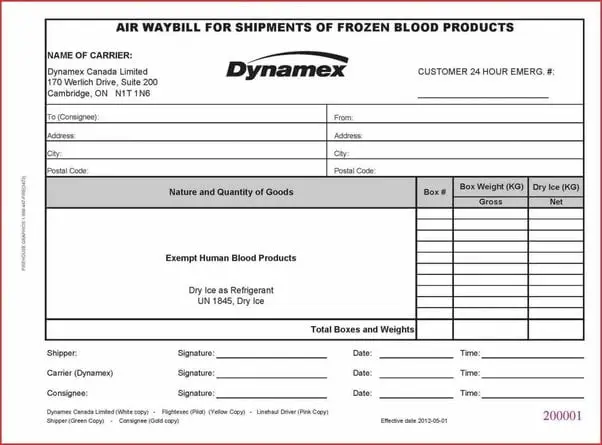
Bill of Lading is also abbreviated as “BL” and Airway Bill as “AWB”. Such bills are the third important document that is required to be submitted to the Customs Department for the clearing of imported goods.
Bill of Lading is prepared when your consignment is shipped and the Airway bill is prepared under air shipment.
It is a carrier document and submitted with customs for import customs clearance.
BL or AWB is issued by the carrier providing all necessary details of cargo with terms of delivery.
Import Export Licence is one of the major documents required for Customs Clearance. Import License is the fourth compulsory document to be submitted for import customs clearance procedures and formalities under specific products.
If you are importing any item for your personal use, then you need not show your import license to customs authorities. If you are importing quantities for commercial purposes, this license is mandatory.
The government issues necessary guidelines for importing specific goods and regulates their guidelines from time to time. To check the procedures are followed, the Government insists on submitting an import license as a mandatory document for customs clearance.


The insurance certificate is the fifth mandatory document for import customs clearance procedures. Insurance of the goods is required as a supporting document against the importer’s declaration on terms of delivery.
With the help of an Insurance Certificate, customs authorities verify whether the selling price includes insurance of the goods or excludes insurance. An insurance certificate is required to be submitted to find out the assessable value and help in the calculation of the import duty amount of the goods.
For calculation of import duty by customs officials, technical literature or write-ups/pamphlets, or any other similar documents help in the speedy clearing process of your goods. In many cases, customs officials ask about such documents. Non-availability in producing literature documents delays the clearing process.
In many cases, officials ask to produce these documents and hold clearing procedures. While importing unique/latest technology goods, it is recommended to ask for such documents from the exporter. By submitting such a document, customs official derives an exact market value of the machinery or goods, and easy for value assessment.
Purchase Order (PO) is a document prepared for the sender party before importing any goods or products. This document is not only prepared for overseas purchases but also prepared for in-nation purchases. Rates, amount, quantity, payment terms and conditions, and many other related specifications are mentioned properly in any PO.
This document is also required for import customs clearance. With the help of a purchase order (PO), customs officials can confirm on value assessment of the product. This document is written proof for both importer and exporter for financial transactions.
Though an industrial license is not mandatory, it is a helping document for the importer. The government may have given some benefit or liberty to any particular product or goods. With the help of these documents, the importer can claim benefits on customs duty.
To avail of that benefit, an industrial license copy is required to be submitted to customs officials as import clearance documents.
To avail of duty exemption from Government agencies under specific goods import, an RCM Certificate is required to be submitted to the customs official. Importers or registered agencies/institutions have to get their registration done for Membership certificates.
On submitting this certificate, some benefit is given in customs duty. This is also an added advantage to avail of custom duty exemption.

A test Report with a Certificate of Origin is also among the additional documents required for Customs Clearance. To assess the value of imported products or goods, customs officials may send your product to Government Authorized Laboratories for necessary Lab Reports. On receiving that Lab Report, the customs officials complete the appraisement of that goods or product. In many countries, a Certificate of Origin is also a mandatory document required.
In this way, this Lab Report automatically becomes an important document for customs clearance.

An importer needs to file a declaration under the General Agreement on Tariff and Trade (GATT) as per the Government of India guidelines.
GATT declaration is also submitted with other customs clearance documents to the customs officials.
Import Export license and its procedure and documentation in PDF format
I have listed all the documents for customs clearance of imported goods. But the Government can change or ask for some more documents as per the guidelines issued from time to time. So you should consult from customs house Agent or Customs officials before receiving any such goods.
Preparation wins half the battle. You should keep yourself ready with the above documents prepared if you are expected to receive any consignment. You may also call us at +91-9319418930 & +91-7827285782 as a customs clearance agent or you may also write to naveenassociatescourier@gmail.com the author for your customs clearance in Delhi.


